At the end of the second day of the Inca Trail, my body was tired (we’d hiked from 3000 metres above sea level, up to 4200 and then back down to 3600 in the space of a day), my mind accomplished (together with Cara I’d been the first in our group to make it to the top of Dead Woman’s Pass), and my heart excited about the day that lay ahead.
In spite of the fact that the night had been bitterly cold, and my thoughts were swimming with ghostly tales from the evening before (yeah, thanks Juan!), I’d slept incredibly well. I was also pleased to discover that the cloud had rolled through, leaving behind a perfect winter morning with some beautifully clear skies above us.
After a welcome mug of hot coca tea and a filling breakfast of hot porridge, fresh fruit and pancakes, we set forth into the half-light of the approaching dawn.
The morning began with an 200 metre ascent to the first of several Incan ruins we would visit today. Runkuracay is an ovoid-shaped building more commonly known as the Egg Hut, and overlooks the Pacamayo valley, offering superb views down on to the Warmiwañusca pass. For this reason it was likely built as a lookout point or Inca tambo – somewhere the chasquis messengers could rest themselves and their animals. We took a leaf out of their book, and grabbed a short break in order to rehydrate ourselves and take a few photographs.
Above Runkuracay the path continued to climb up to the peak of the second pass, Abra de Runkuracay – 4000 metres above sea level. Fortunately we made frequent stops at viewpoints along the way in order to admire the incredible vistas that lay below us. These were also perfect opportunities to utilise the super wide angle lens on our Go Pro.
From Abra de Runkuracay it was all downhill, and whilst descents don’t bother me (I seem to be blessed with fairly resilient joints as far as hiking goes although 7 consecutive days in the saddle did begin to take its toll on my knees), I much prefer the uphill stretches. I love the sense of anticipation and excitement you experience as you near the top of the climb and the stunning panoramas with which you are undoubtedly rewarded.
The descent was gentle to begin with, allowing us to slow our pace a little and to move our focus away from the path ahead. In doing so we we able to fully enjoy the beautiful vistas and lush plant life along the trail.
Whilst our first Incan ruin of the day had been a fairly small structure, Sayacmarca sprawled across the mountainside ahead of us, a series of narrow stone steps linking it to the path upon which we walked.
Its function remains a bit of a mystery to historians (a tambo has been ruled out due to nearby Concha Marca, there’s not enough agricultural land for it to be a farming outpost, and the stonework is not impressive enough for it to be a religious centre) but archeologists have managed to date its construction back to the 15th century.
A combination of its labyrinthine construction and elevated position, and the beautiful blue skies we were rewarded with throughout our visit made this my favourite of the Incan sites we explored that day. I loved it so much that I failed to notice I was the only member of our group still wandering through its grounds.
I’m a bugger for for getting swept away in my own little adventures and losing track of anything and everything that happens to be going on around me, so I take my hat off to Juan and Ronan for waiting patiently by the entrance for me to return, and for not grumbling when I finally did.
We continued to descend along the uneven stone track beneath our feet, passing masses of flourishing bamboo plants and lush vegetation at either side, until we reached our lunch spot – which also happened to be home to a selection of curious llamas.
I wasn’t quite brave enough to attempt the whole llama selfie myself (although being charged by a llama may have made for an interesting story!), so all credit to José for pulling off this rather magnificent shot.
During the short time we’d been stopped for lunch (only a fraction of which was actually spent eating lunch; the rest was chasing the perfect llama photograph), the cloud had rolled in once again, forcing us to layer up as we continued our descent.
We passed through some magnificent cloud forests full of hanging mosses, tree ferns and flowers, including an impressive Inca tunnel carved into the rock.
The path then started to climb again, up to 3700 metres, and would have offered us some stunning views of the snow-capped peaks of Salkantay (6180 metres) and Veronica (5750 metres) had there not been so much cloud around.
The cloud did however make for a rather atmospheric shot of our third Incan ruin, Phuyupatamarca, whose name (very appropriately) means ‘ Town in the Clouds’.
Access to Phuyupatamarca is down a steep flight of stone steps, and was only the start of a long section of the trail more commonly known as the ‘Gringo Killer’. The stairs were uneven and stupidly steep in places – not to mention wobbly. For someone who doesn’t have the best balance in the world, if any part of the trail was going to kill me, it would undoubtedly be this one.
Continuing past the impressive ruins of Phuyupatamarca, we started to descend into the what can only be described as the Inca Trail rainforest. Vines hung down from tall trees, mosses grew in abundance, and moisture lingered in the warm air.
And still we continued to descend…
My legs were feeling pretty tired by this stage that I longed for a sighting of our final Incan ruin, Intipata, up ahead. We’d been given strict instructions by Juan not to turn off the path, however when one of the guides in another trekking group we passed suggested a short cut, I was sorely tempted.
By the time we reached Intipata the daylight was fading – along with our energy and enthusiasm. But we had to keep going in order to make it to our final campsite at Wiñay Wayna before nightfall.
Wiñay Wayna sits at 2700 metres above sea level, and whilst the campsite was barely big enough to accommodate us all and the cleanliness of bathrooms left a lot to be desired, the final meal we all shared together totally blew me away.
On top of the vast array of thoughtfully composed and beautifully presented vegetarian and meat dishes we were served at Wiñay Wayna, our cook had baked (and decorated) a cake for us! He deserved every sol of the tip we presented him with after the meal.
The fourth day of our Inca Trail trek began in the middle of the night. Our wake up calls came at 3am, and by 3:30am we were trudging through the woods in the pitch dark, our head torches providing the only source of light with which to guide our way.
It was only a short walk to the control station, where we would sit in line for the best part of two hours whilst we waited for the gates to open. This would have been an incredibly boring activity had it not been for José and his ukulele, and one of the guys in another of the trekking groups who’d actually bought a stereo, some kick-ass tunes and some light poi.
Up until this point the trail had been – for the most part – beautifully quiet. There had been another couple of trekking groups with whom we’d shared lunch spots and campsites, but we rarely saw them anywhere else on the trail.
The final morning was a different story entirely. The gentle 150 metre descent follows a narrow trail that contours a mountainside and drops into some beautiful cloud forest. It’s the kind of scenery that looks especially stunning in the pre-dawn light – for the few fleeting seconds that you are actually able to stop and appreciate it.
The race to Intipunku (the Sun Gate) was my least favourite part of the trek, because that’s exactly what it felt like – a race. Yes it was lovely to witness the first of the sun’s rays lighting up the tops of the immense Incan city, but I didn’t appreciate being herded like cattle in order to get there.
There is no doubt that Machu Picchu is an incredible feat of both construction and engineering, and thoroughly deserves its place as one of the 7 New Wonders of the World.
However, the sheer number of people at the site (Machu Picchu sees 2500 visitors per day; this number would be much higher had a restriction not been set in 2011) made it difficult for me to enjoy the experience of being there – certainly from a photographer’s point of view, at least.
Whilst I appreciate this is to be expected at any major tourist attraction (and all the more so at the most visited site in South America), it was a bit of a shock to the system after days of camping in the remote Andes mountains.
Fortunately Machu Picchu is built on such an immense scale that even in spite of the crowds it’s still possible to find those isolated corners where you can perch on a centuries-old stone wall, gather your thoughts and stare wistfully at the majestic Andean mountain peaks.
It’s backdrops like this that help the site to retain its air of grandeur and mystery.
I felt a twinge of sadness as we left the grounds of this magnificent Incan city, because it signified the end of what had been a truly unforgettable journey.
Whilst the final destination had been no less impressive than I had imagined it to be, it was the 4-day journey through some of nature’s most diverse and beautiful landscapes that held the memories I will cherish the most.
I will never forget the incredible feeling of being the (joint) first in our group to make it to the top of Dead Woman’s Pass, or the wonderful meals and camaraderie we all shared.
I will always remember the freezing cold nights at the campsites listening to ghost stories and drinking hot coca tea, or lying in my tent at night being serenaded by José on his ukelele, and looking up at a sky filled with an endless expanse of stars.
This is my Inca Trail experience. What’s yours?
If you’d like to know how it all began, you can read the first instalment of my 4-day Inca Trail trek here.
Alternatively I’ve written a lengthy post about the logistics of the trek (when to go, how far in advance you need to book, choosing a trekking company, packing lists, costs, acclimatising to the altitude and what to expect) over at Backpack South America.
If you like this article, please follow along on Facebook, Twitter, or Google+ or you can look me up on Instagram or Pinterest too!
This is part of the #SundayTraveler link-up, hosted by Chasing The Donkey, Pack Me To, A Southern Gypsy, The Fairytale Traveler, and Ice Cream and Permafrost.


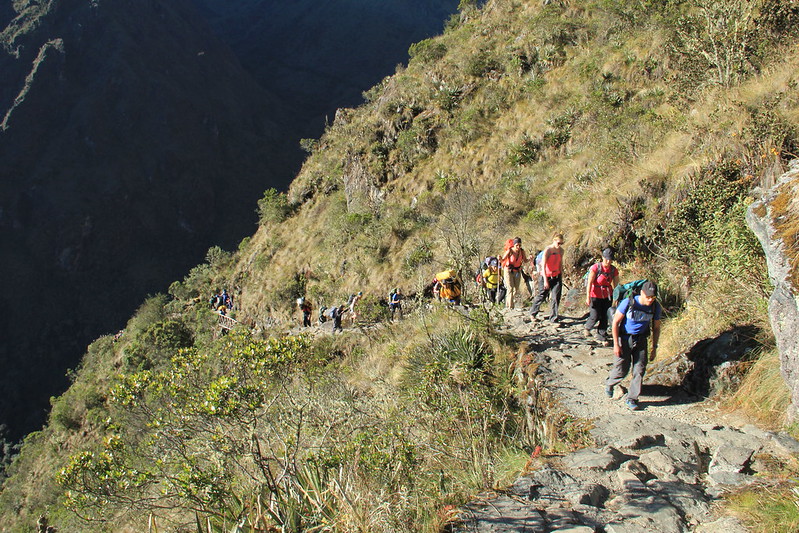


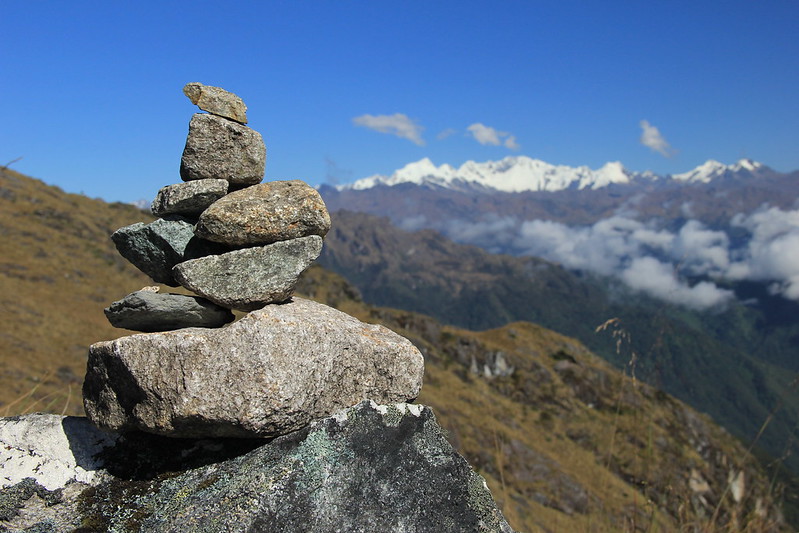
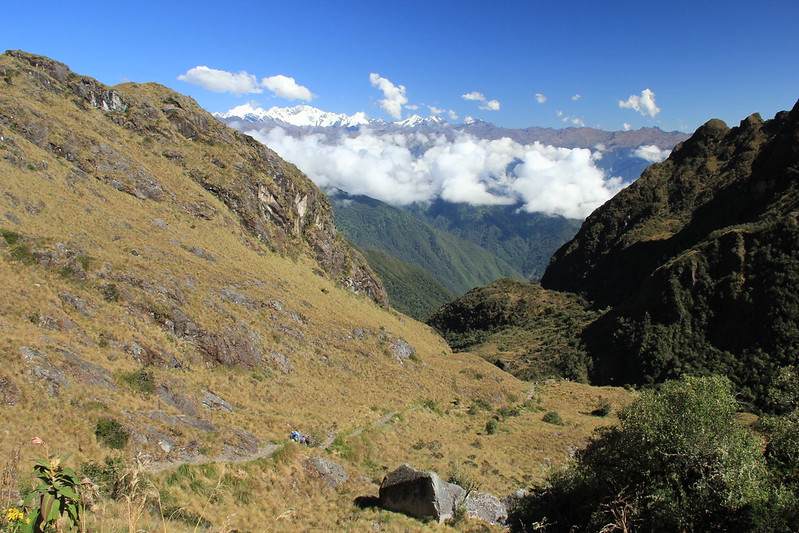

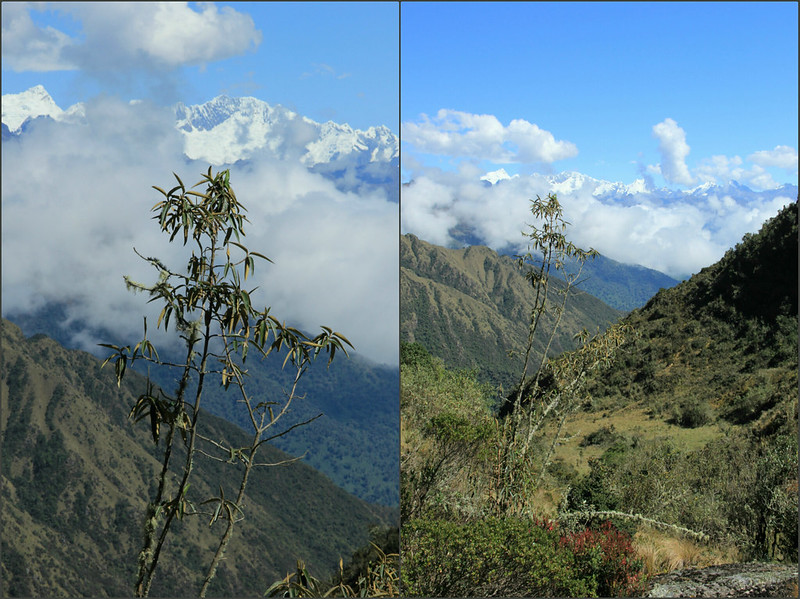







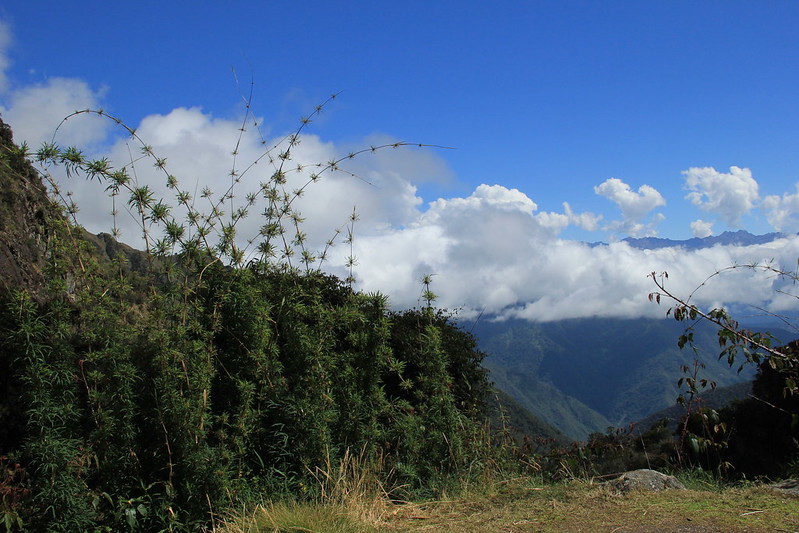



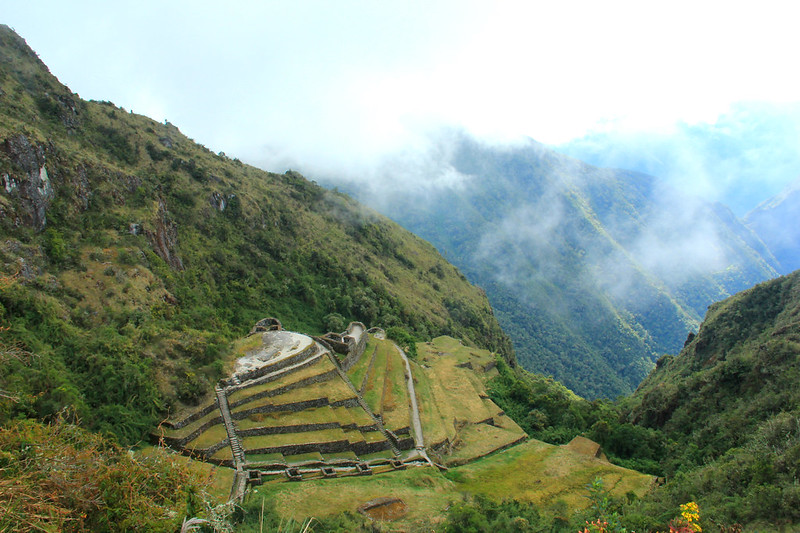
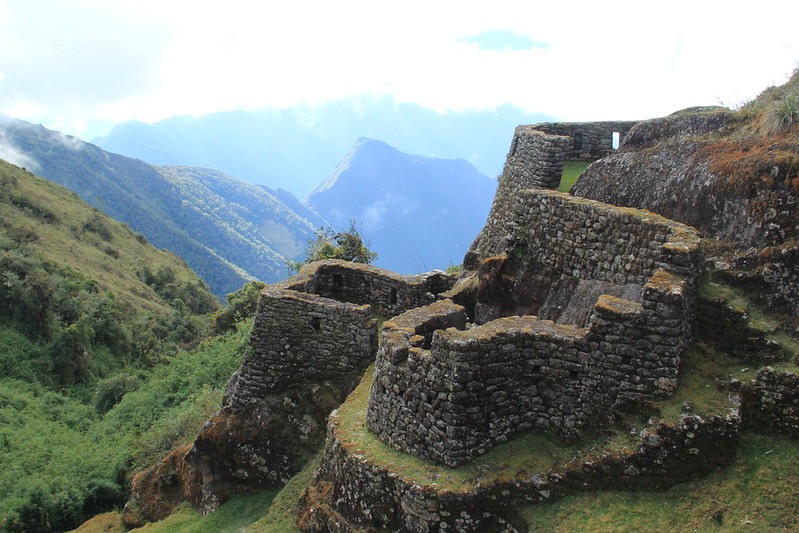











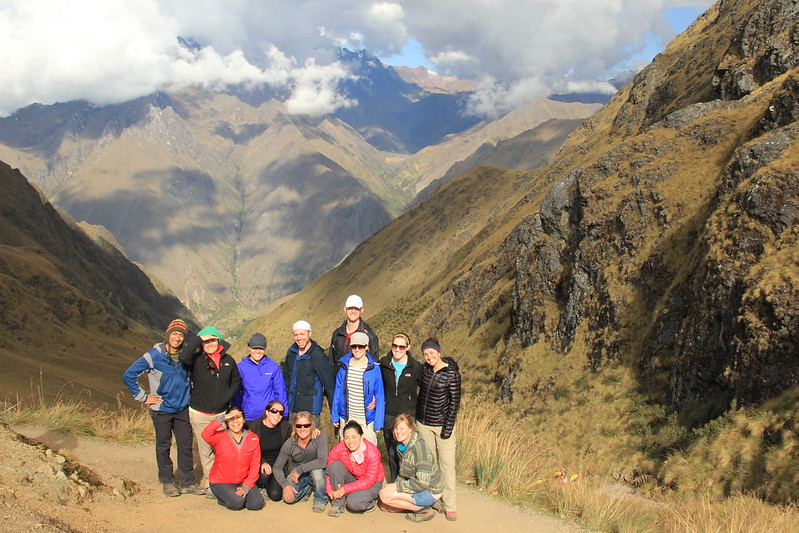






8 Comments
Oh man, I just read part 1 and 2 and I’m tired just reading it! I’m really impressed with you and others who have accomplished this. When I first heard of the Inca Trail, it was on my list of things to do, but now it’s not, haha. I doubt I’m in any way fit enough for it and roughing it for 4 days no longer sound like my idea of fun!! I still think it looks absolutely amazing though and I can only imagine the sense of pride!!
Yeah, the whole roughing it thing wasn’t great. I’m the kinda girl who likes to have a shower and wash her hair every morning so can’t say I was a huge fan of not washing for 4 days (have you noticed there’s hardly any pics of me in the post? lol ;-)) but it was worth it for the experience. I wouldn’t say you have to be very fit to do the trek but you do have to be fully acclimatised to the altitude. I did a trek beforehand in Huaraz when I wasn’t acclimatised and it nearly killed me! Chewing coca leaves really help too 🙂
It is funny how similar our experiences were on the Inca Trail! (I guess that’s not too surprising considering we did the trek a couple days apart and with the same company). Sayaqmarka was also my favorite ruins of the trek, probably because it was so perfectly situated on top of the mountain with such amazing views. It’s interesting you mentioned the part about being shocked by the Machu Picchu crowds after being away from civilization for a while. We stuck around Machu Picchu just long enough for the tour and then left when the crowds started pouring in because we knew we were coming back the next day. I think that really helped our experience because the second day we climbed Machu Picchu Mountain, which had almost no one else on the trail and gave us jaw-dropping views without the crowds. I bet if we had hung around the main ruins in the afternoon I would have been telling a slightly different story!
Aw, I so wish we’d done what you did now! But because we booked the trek so far in advance, we didn’t have an itinerary at that stage so thought it best just to book the train back to Cusco at the end of it. I would have loved to have climbed Wayna Picchu (I think this is what you mean by ‘Machu Picchu mountain’) too, but my boyfriend’s not really a hiker like I am, so he’d had enough by the end of the 4 days! I’m getting used to having to compromise travelling as part of a couple 😉
Yeah the need to book so far in advance definitely complicates things! Actually we skipped Wayna Picchu and hiked the mountain on the other side of Machu Picchu (Machu Picchu Mountain) which is a bit taller, and practically deserted. I wrote a post on it, if you’re interested (it’s the second one down on my home page). Maybe by the time you return to Peru, you will have converted your boyfriend to love hiking 🙂
I didnt even realise there was another mountain to climb other than Wayna Picchu, so I’ll definitely have to check out your post on Machu Picchu mountain 🙂
This is high on our must do list and we hopefully will next year. We only touched Peru for two days on our way to Chile, but those two days were enough to convince us we needed to see much more.
As for MP it has to be a must for every traveller, and as you mention it has some 2500 visitors each day which is incredible. Not so sure it’s going to be fun when we get to go, like a trail of ants making the way to the best view point.
Oh well, I know we are still looking forward.
I’d definitely recommend re-visiting Peru. It’s such a beautiful, colourful and diverse country. If you’re just going to visit Machu Picchu and not hike the Inca Trail, I’d advise going as early as possible. Due to hiking down from the Sun Gate beforehand, we didn’t arrive there until around 10:30. I’ve heard it can be beautifully quiet first thing in the morning 🙂